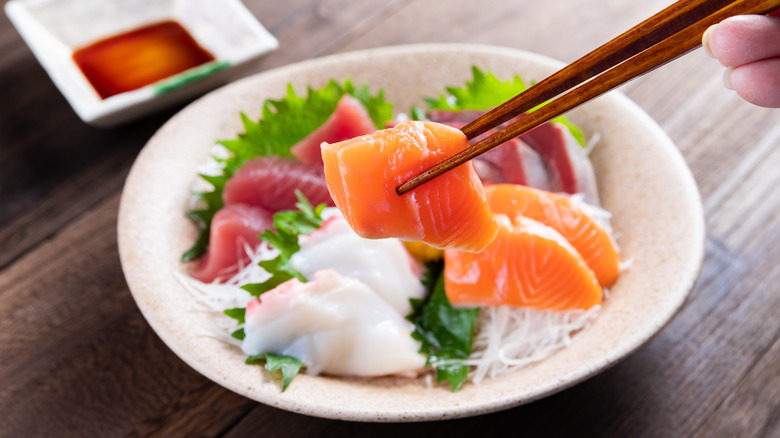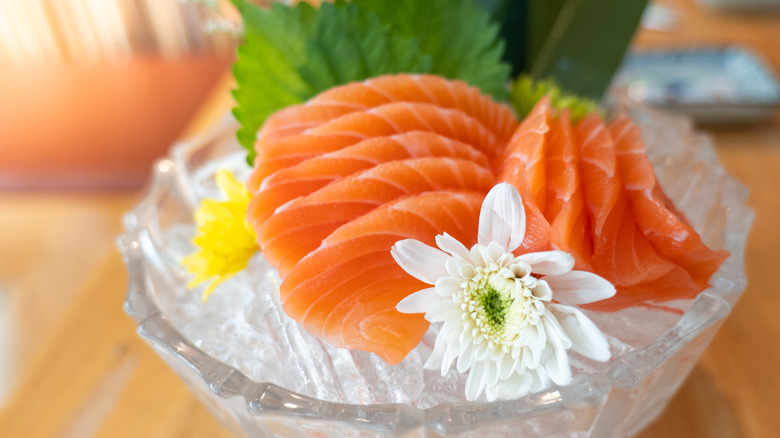What's The Sashimi Type Made From Thinly Sliced Raw Salmon?
Many Japanese dishes look more like art than they do food. This is not surprising given that Japanese chefs and servers agonize over aspects like food placement, which serving plates to use, and how to best display the menu. (This is why many Japanese restaurants boast excellent menu displays.) While ramen and onigiri are both beautiful in their own way, sashimi, which is very different to sushi, is perhaps the most artful of all Japanese dishes.
Sashimi consists of thinly sliced fish or meat which is served raw and sliced in a range of shapes and sizes to look aesthetically pleasing. One of the most popular kinds of sashimi is called sake sashimi. In the context of sushi and sashimi, "sake" means salmon so it won't come as a surprise to learn that sake sashimi is made from raw salmon. (It is important to note that the word "sake" can also refer to the Japanese alcoholic beverage, sake. Funnily enough, sake sashimi and sake the drink are often paired together.) The type of salmon used to make sake sashimi can vary, but king, sockeye, and Atlantic salmon are all popular choices. When served as sashimi, these fish taste rich, flavorful, and tender. For an extra layer of flavor, the sashimi is often served with soy sauce, wasabi, or pickled ginger.
How to eat sake sashimi
If you want to eat sake sashimi the right way, there is some etiquette to follow. Sashimi is traditionally eaten with chopsticks. If using wasabi, apply it to your sashimi before gently picking the fish up with your chopsticks and dipping it lightly into the soy sauce. (It might be tempting to mix the wasabi and soy sauce together first, but Japanese chefs advise against it as it ruins the flavor of both condiments.) Don't dip the fish in the soy sauce for too long, otherwise you risk overpowering the sashimi. You should eat the whole piece in one bite to enjoy the full array of flavors.
You can experiment with what condiments you pair your sake sashimi with. Soy sauce is the most popular choice as it won't take away from the salmon's flavor, however, other options include cucumber which provides a texture that contrasts with the fish. If you're after a palate cleanse between each piece of sashimi, nibbling on some pickled ginger (which happens to boast a lovely pink color) will help clear your taste buds. Sake sashimi is also sometimes served with lemon; it adds a refreshing, citrus flavor. So, next time you're at your favorite Japanese restaurant, make sure to order some sake sashimi — bonus points if you order sake as your drink too.

